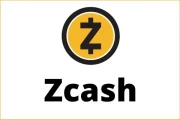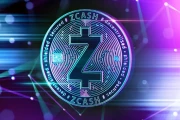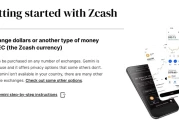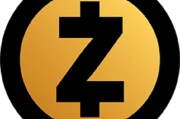Generated Title: Zcash's "Privacy" Pump: Is It a Revolution, or Just Anothe...
2025-11-09 11 Zcash
An asset that hovered around $40 for three years doesn't just wake up one morning and decide to rally 1,486%. That’s not how markets work. Yet, that is precisely the story of Zcash (ZEC), a privacy-focused cryptocurrency that has exploded from relative obscurity into the 18th-largest digital asset, boasting an $11.2 billion market capitalization.
The numbers are staggering. In just five weeks, ZEC’s price multiplied tenfold, peaking near $750—a level not seen since January 2018. The move was so violent it triggered over $59 million in liquidations on a single Friday, placing it third behind only Bitcoin and Ethereum. For an asset that was, until recently, a forgotten relic of the 2017 cycle, this is an outlier event of the highest magnitude.
The immediate question is simple: Why? Is this a fundamental repricing based on new information, or is it a purely mechanical, speculative frenzy? The data points to a complex answer, where a powerful market dynamic has latched onto a budding, but still unproven, fundamental narrative.
Before we get to the narratives about privacy and utility, we have to look at the mechanics. The primary driver of this parabolic move appears to be a classic short squeeze. According to Nansen analyst Jake Kennis, the funding rate for ZEC perpetual futures has been "extremely negative." For the uninitiated, this means a large number of traders were betting against Zcash, paying a premium to hold short positions.
This creates a coiled spring. As the price begins to rise, those short sellers are forced to buy back ZEC to cover their losing positions. This forced buying adds fuel to the fire, pushing the price higher still, which in turn liquidates more shorts. It’s a vicious feedback loop. You can almost picture the cascade on the order books, a wall of red sell orders vaporized by a surge of green as algorithms close out underwater positions. The $51 million in short liquidations on November 7th wasn't the cause of the rally; it was the gasoline poured on an already roaring fire.
This is the part of the analysis I find genuinely puzzling. Why was the short interest so high in the first place? Was it a conviction trade against privacy coins, or simply a popular basis trade that got steamrolled? The available data doesn't give a clear answer, but the outcome is undeniable. The initial price move, which jumped from $74 to over $700, was less a vote of confidence in Zcash and more a catastrophic failure of risk management for a crowded field of bears.
But a squeeze can't last forever. It needs a story to sustain it, something for the new money flowing in to believe in. And Zcash, almost by accident, found one at the perfect time.

As the market mechanics played out, a powerful ideological tailwind began to blow. Concerns over blockchain surveillance and regulatory overreach have been simmering for years, but the recent five-year federal prison sentence for Keonne Rodriguez, a developer of a Bitcoin privacy wallet, brought them to a boil. The harsh sentence sent a clear signal: financial privacy on transparent ledgers is under attack.
This is where Zcash’s core value proposition re-enters the conversation. Created in 2016, its entire purpose is to enable anonymous transactions through zero-knowledge proofs. As Nansen's analyst noted, privacy is shifting from a niche feature to a "perceived necessity." Zcash, with its Bitcoin-like tokenomics (a fixed 21 million supply) and mature cryptographic layer, suddenly looked like an "encrypted Bitcoin" for a world growing anxious about corporate and state surveillance of the main chain.
This narrative was supercharged by a crucial technological development: the integration of Zcash onto the Solana blockchain. A new project, Zenrock, launched a wrapped version of ZEC called zenZEC. This is not a trivial development. For over seven years, Zcash has been an island, its privacy features siloed from the booming world of decentralized finance (DeFi). Zenrock’s solution uses a decentralized multi-party computation (MPC) network to wrap ZEC, allowing it to be used across Solana's fast and liquid DeFi ecosystem.
The potential here is significant. Zcash holders can now, for the first time, use their assets as collateral, provide liquidity, and earn yield without sacrificing their ZEC exposure. Aditya Dave of Zenrock claims this brings privacy back to crypto after it was "sacrificed" in the rush for institutional adoption. It's a compelling pitch. The problem is the scale. Since its debut on October 31st, the project has seen early but limited adoption, as one report title puts it: Zcash Privacy Meets Solana DeFi with Zenrock’s Wrapped ZEC Crossing $15M in Volume. That’s a respectable start—to be more exact, it’s a promising proof-of-concept—but it’s also a rounding error against Zcash’s newfound $11.2 billion valuation.
This is the core discrepancy. We have a market cap suggesting widespread, high-stakes adoption, but the on-chain data shows a project in its infancy. The zenZEC volume is a single flickering candle in a stadium, while the ZEC price chart looks like a searchlight pointed at the sky. Can that small flame of utility grow bright enough to justify the attention? Or will the light simply burn out once the speculative fuel is exhausted?
Let's be precise. The Zcash rally is not a story of fundamentals; it is a story of market mechanics colliding with a timely narrative. The Solana integration via zenZEC is a legitimately interesting and necessary step forward for the asset, representing the first real bridge between Zcash’s privacy and DeFi’s utility. But its current economic footprint (a mere $15 million in volume) is profoundly disconnected from the multi-billion dollar valuation the market has assigned to ZEC.
The price action is the noise—a deafening roar of liquidations, FOMO, and renewed attention. The zenZEC volume is the signal—a quiet, tentative indication of future utility. Right now, the noise is winning. The question for any serious analyst is whether the signal can grow strong enough to survive when the noise inevitably fades. My analysis suggests the current valuation is unsustainable and reflects a speculative premium that the underlying technology has yet to earn. The foundation is being laid, but the skyscraper has been built on top of it overnight.
Tags: Zcash
Related Articles

Generated Title: Zcash's "Privacy" Pump: Is It a Revolution, or Just Anothe...
2025-11-09 11 Zcash

Zcash's "Privacy" Push: Or How Crypto Finally Embraced the Thing It Was Sup...
2025-11-07 12 Zcash

Arthur Hayes' $20,000 Zcash Call: Genius Move or Privacy-Fueled Hype? Hayes...
2025-11-06 10 Zcash

A Privacy Revolution or Just Another Hype-Fueled Gamble? Let’s get one thin...
2025-11-01 10 Zcash

Let me get this straight. Zcash, a coin I’m pretty sure was cryogenically f...
2025-10-30 11 Zcash

It’s not often you get to witness a ghost come back to life. But for the la...
2025-10-02 29 Zcash